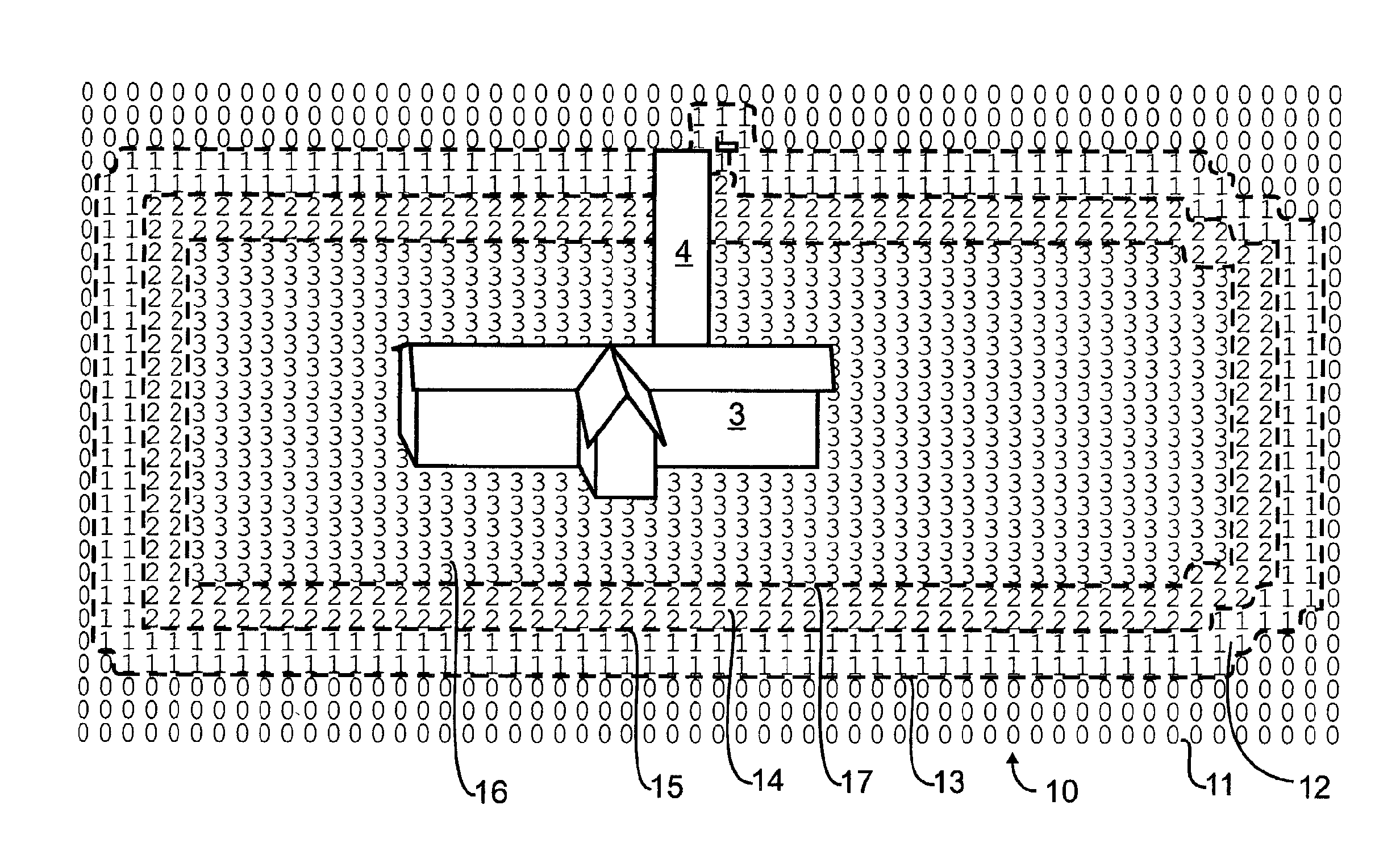Wireless Location Assisted Zone Guidance System
a technology of location assisted and guidance system, applied in the field of electric communication, can solve the problems of limited ways to exert the control of a dog, no value between a pet and a owner, and high installation cost and installation time, and achieve the effects of modifying the behavior of a pet, simple and efficient set-up and operation, and efficient and expeditious pet training
- Summary
- Abstract
- Description
- Claims
- Application Information
AI Technical Summary
Benefits of technology
Problems solved by technology
Method used
Image
Examples
Embodiment Construction
[0032]In a preferred embodiment designed in accord with the teachings of the present invention, a pet owner might want to train a pet to stay within an example property such as that illustrated in prior art FIG. 1. An outer limit of the property 2 may encompass one or more buildings 3, a driveway 4, and a mailbox 5. If, for exemplary purposes, the pet is or will be trained to walk with the owner to the mailbox, or to retrieve the newspaper from adjacent to the mailbox, then the owner may wish to provide a small peninsula 6 which could extend beyond the bounds of the particular property location.
[0033]A self-contained collar apparatus, which might for exemplary purposes and not solely limiting thereto resemble that illustrated by Swanson et al in 2007 / 0204804 and incorporated by reference herein above, will contain the necessary electronic components such as illustrated in the Swanson et al FIG. 5, including components to receive and decipher location determining signals and also exp...
PUM
 Login to View More
Login to View More Abstract
Description
Claims
Application Information
 Login to View More
Login to View More - R&D
- Intellectual Property
- Life Sciences
- Materials
- Tech Scout
- Unparalleled Data Quality
- Higher Quality Content
- 60% Fewer Hallucinations
Browse by: Latest US Patents, China's latest patents, Technical Efficacy Thesaurus, Application Domain, Technology Topic, Popular Technical Reports.
© 2025 PatSnap. All rights reserved.Legal|Privacy policy|Modern Slavery Act Transparency Statement|Sitemap|About US| Contact US: help@patsnap.com



